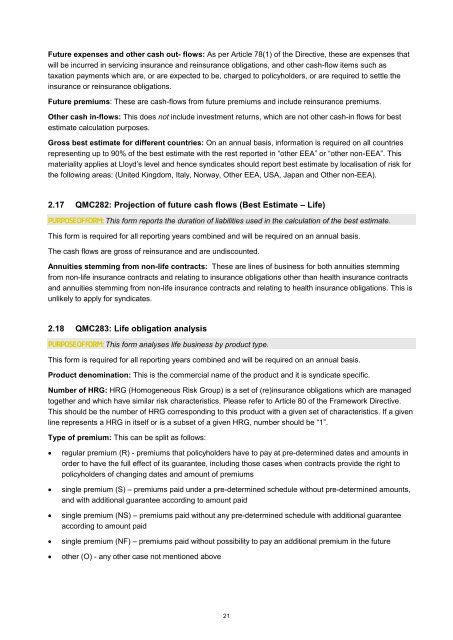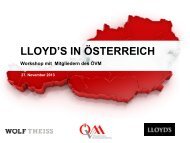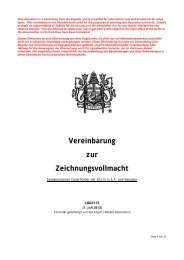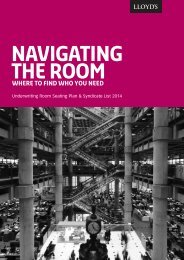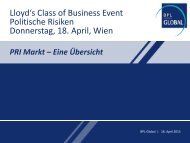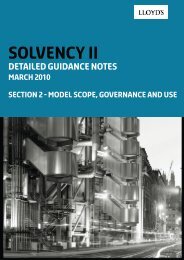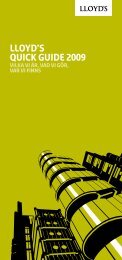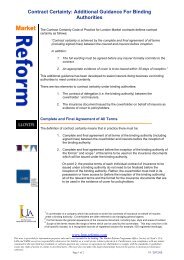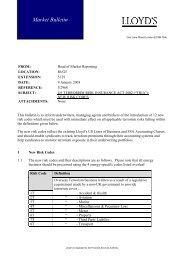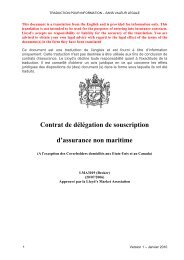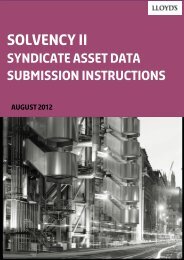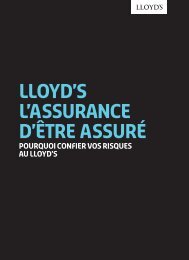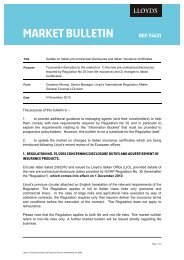Create successful ePaper yourself
Turn your PDF publications into a flip-book with our unique Google optimized e-Paper software.
Future expenses and other cash out- flows: As per Article 78(1) of the Directive, these are expenses that<br />
will be incurred in servicing insurance and reinsurance obligations, and other cash-flow items such as<br />
taxation payments which are, or are expected to be, charged to policyholders, or are required to settle the<br />
insurance or reinsurance obligations.<br />
Future premiums: These are cash-flows from future premiums and include reinsurance premiums.<br />
Other cash in-flows: This does not include investment returns, which are not other cash-in flows for best<br />
estimate calculation purposes.<br />
Gross best estimate for different countries: On an annual basis, information is required on all countries<br />
representing up to 90% of the best estimate with the rest reported in “other EEA” or “other non-EEA”. This<br />
materiality applies at Lloyd’s level and hence syndicates should report best estimate by localisation of risk for<br />
the following areas: (United Kingdom, Italy, Norway, Other EEA, USA, Japan and Other non-EEA).<br />
2.17 QMC282: Projection of future cash flows (Best Estimate – Life)<br />
Purpose of form: This form reports the duration of liabilities used in the calculation of the best estimate.<br />
This form is required for all reporting years combined and will be required on an annual basis.<br />
The cash flows are gross of reinsurance and are undiscounted.<br />
Annuities stemming from non-life contracts: These are lines of business for both annuities stemming<br />
from non-life insurance contracts and relating to insurance obligations other than health insurance contracts<br />
and annuities stemming from non-life insurance contracts and relating to health insurance obligations. This is<br />
unlikely to apply for syndicates.<br />
2.18 QMC283: Life obligation analysis<br />
Purpose of form: This form analyses life business by product type.<br />
This form is required for all reporting years combined and will be required on an annual basis.<br />
Product denomination: This is the commercial name of the product and it is syndicate specific.<br />
Number of HRG: HRG (Homogeneous Risk Group) is a set of (re)insurance obligations which are managed<br />
together and which have similar risk characteristics. Please refer to Article 80 of the Framework Directive.<br />
This should be the number of HRG corresponding to this product with a given set of characteristics. If a given<br />
line represents a HRG in itself or is a subset of a given HRG, number should be “1”.<br />
Type of premium: This can be split as follows:<br />
� regular premium (R) - premiums that policyholders have to pay at pre-determined dates and amounts in<br />
order to have the full effect of its guarantee, including those cases when contracts provide the right to<br />
policyholders of changing dates and amount of premiums<br />
� single premium (S) – premiums paid under a pre-determined schedule without pre-determined amounts,<br />
and with additional guarantee according to amount paid<br />
� single premium (NS) – premiums paid without any pre-determined schedule with additional guarantee<br />
according to amount paid<br />
� single premium (NF) – premiums paid without possibility to pay an additional premium in the future<br />
� other (O) - any other case not mentioned above<br />
21


